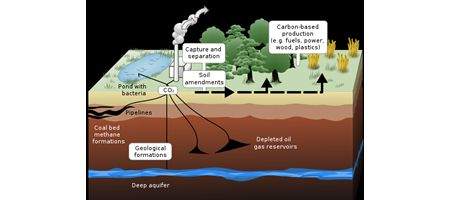Virginia Tech researchers plan to inject some 20,000 tons of carbon dioxide (CO2) into a coalbed methane field in southwest Virginia, as part of a Department of Energy project.

Last week, the DOE said it planned to to expand its research to make sure that long-term geologic carbon dioxide storage is safe and environmentally secure, and has allocated more than $45 million to the effort.
“The proposed research will test the ability to inject CO2 into coal seams that cannot be mined, as well as the potential to enhance the coalbed methane recovery,” says Michael Karmis, director of the Virginia Center for Coal and Energy Research.
The project is based on a number of earlier studies that have, says the team, identified promising methods for storing CO2 in stacked underground reservoirs, and the ability to sequester it in coal seams.
The team hopes to find out which coal seams are good disposal sites, and establish the conditions under which the impounded CO2 would remain stable.
For example, previous studies have indicated geologic formations in Central Appalachia are promising. “However, limited experience with injection into coal, tight sandstone, and organic-rich shales in Central Appalachia makes commercial potential uncertain at this time,” says Karmis.
Two other new DOE projects will allow Blackhorse Energy of Houston, Texas and the University of Kansas Center for Research to perform similar studies.
Carbon capture and storage isn’t universally popular. It’s currently looking expensive, and there’s a significant danger of leakage.






